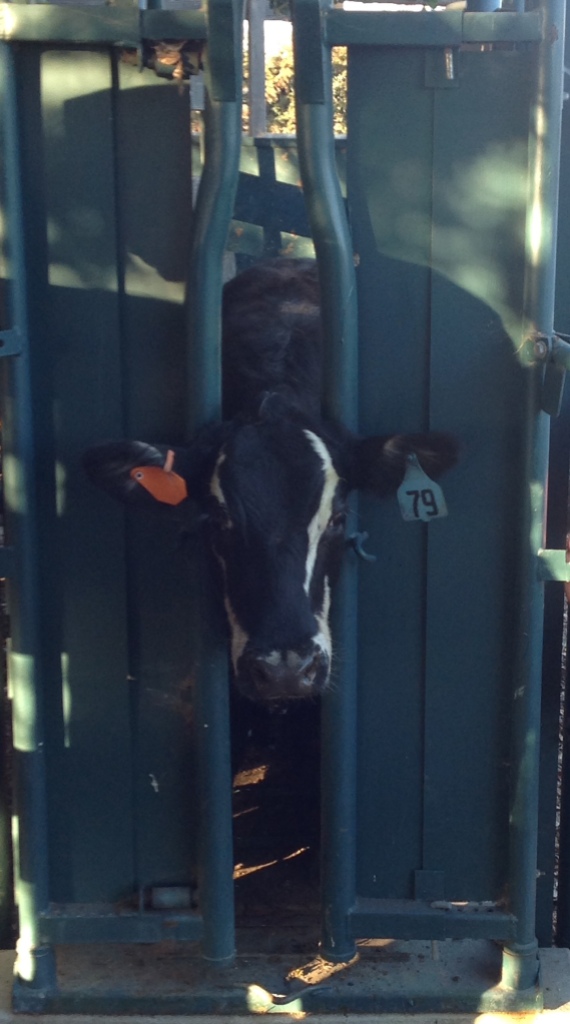Last week Grieb Ranch was off to the Santa Barbara County Fair. Grandpa Grieb stayed home and manned the ranch while the rest were working and well yes, playing, at the fair. Along with all the animal supplies many other things had to be brought and set up on site: the stall decorations, the blocking chute, the travel trailer to sleep in and the Replacement heifer to show. First on the fair agenda is the pregnancy test – if the heifer is not pregnant she can’t be shown. Next is the showmanship class followed by the breed judging class. All these classes set up the animals for the auction on Friday of fair week. Every day during the week the animals are groomed, fed, watered and of course the cow stall is mucked several times a day. All free time is spent hanging with fair friends and doing fair activities like the rides.
Wow! One of the Replacement heifers from Grieb Ranch and shown and worked with by our friend Katie Howell was Reserve Champion FFA Replacement Heifer and Local Bred Reserve Champion! These awards are a Grieb Ranch first! Katie started working with “Adele” shortly after she was born out at Grieb Ranch.
Extra excitement this year came from the sky as thunder, lightning and pouring rain caused all participants to run for cover and resulted in a mandatory evacuation of the camp trailer area on Sunday morning. Imagine the chaos as hundreds of rigs were tying to get out of there at once. July is typically one of the driest here on the Central Coast so to get a rain storm like this in July during a drought was truly unexpected.



